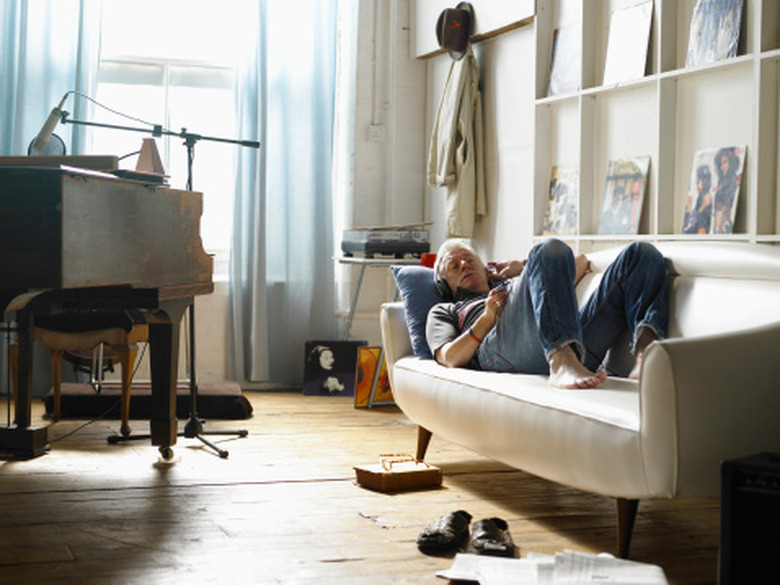Sofa Dimensions Vs. Room Size
Rather than using a one-size-fits-all formula to find the ideal sofa for a living room, interior decorators rely on nothing more than a tape measure and an innate sense of proportion. Proportion and scale dictate how well your couch will look in the room and in relation to other objects.
Planning the Room
Planning the Room
Though it requires extra preparation, drawing a small-scale replica of your room on graph paper will help you figure out the perfect sofa size. By incorporating all of your furnishings into your two-dimensional model, you'll see how much room you have left for a couch. You need free space around your furniture so you don't bump into anything, and remember to leave room on either side of the couch if you want side tables.
Do a Trial Run
Do a Trial Run
If you know where you want to put your couch, use masking tape on the floor to outline the ideal couch size. Measure the depth and width of your mock-up and use the measurements to shop for a sofa. If the couch will sit in front of a window, height is also a factor, as you don't want the couch to block too much of the view. Measure your doorways before finalizing your order, or your new sofa may not make it through the front door.
Scale and Proportion
Scale and Proportion
Scale refers to the way that objects relate to each other in a room. Ideally, your room will possess objects of a similar scale. For example, dainty chairs will seem out of place near a puffy couch. Rooms with wild variations in scale will feel out of kilter. Proportion refers to the way that an object relates to the room as a whole. Spacious rooms require larger sofas, such as sectionals or 100-inch wide davenports. In petite spaces, couches with two seats work better, though you may break this rule if you limit your other furnishings.
Sofa Considerations
Sofa Considerations
A skirted couch anchors the room, while a sofa with exposed legs shows more of the floor and makes the room appear larger. Couches with small, streamlined arms function efficiently, as larger arms take up potential seating space. Light, neutral upholstery works well in smaller rooms because dark, heavy fabric creates the illusion of weight. To achieve formal balance in the room, place two couches across from each other. For casual, asymmetrical balance, place two chairs across from your sofa.
